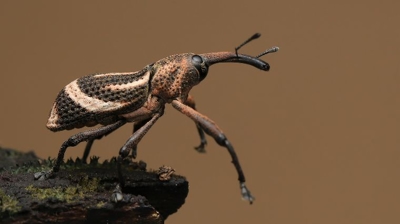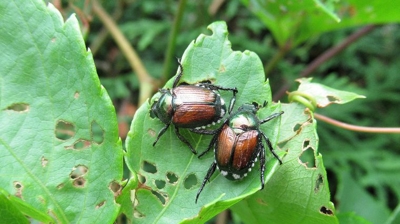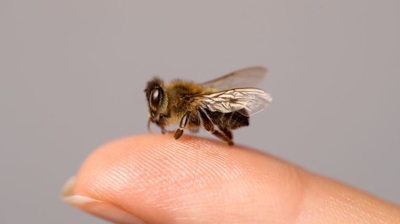
Chiggers
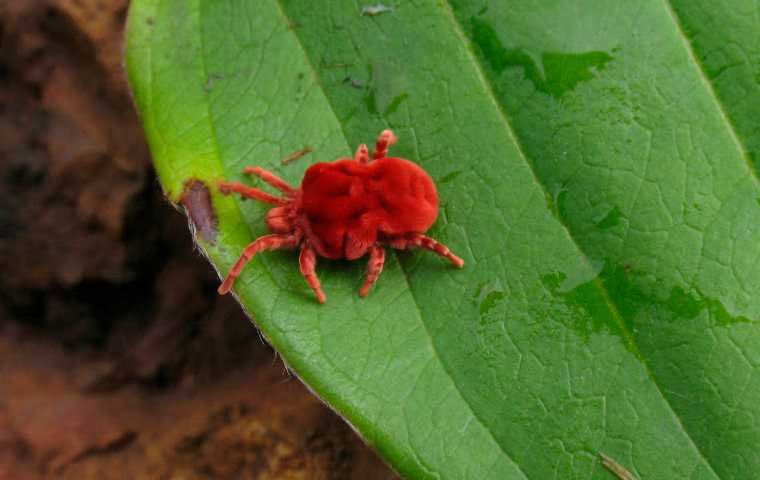
What Are Chiggers?
Chiggers, scientifically known as Trombiculidae, are tiny mites that belong to the arachnid class. They are parasitic and are commonly found in various parts of the world, particularly in grassy or wooded areas. Chiggers are most prevalent during warm, humid seasons, as they thrive in such conditions. These minuscule arachnids are red or orange in color and have six legs during their larval stage, which is when they are of primary concern to humans.
Chigger larvae are responsible for the discomfort associated with chigger bites. They feed on the skin cells of mammals, including humans. When chigger larvae attach themselves to the host's skin, they use specialized mouthparts to pierce the skin and inject enzymes that break down the skin cells. This process forms a feeding tube, which the chiggers use to consume the dissolved skin cells and nutrients. The host's body responds with an itchy, red, and inflamed bump or rash at the site of the bite.
Chigger bites are not only irritating but can also lead to secondary bacterial infections if scratched excessively. Preventative measures, such as wearing protective clothing and using insect repellent, can reduce the risk of chigger bites. Additionally, taking a hot shower and using antipruritic creams can alleviate the discomfort and itchiness associated with chigger bites.
Are Chiggers Harmful?
Chiggers, which are the larvae of mites from the Trombiculidae family, are considered harmful primarily due to their bites, which can cause intense itching, skin irritation, and potential secondary infections. Here are some of the ways in which chiggers can be harmful:
- Severe Itching and Skin Irritation – Chigger bites inject digestive enzymes that break down skin cells, causing an intensely itchy rash. The body reacts to these enzymes, leading to red welts or bumps that can persist for days or even weeks.
- Risk of Secondary Infections – Excessive scratching of chigger bites can break the skin, making it vulnerable to bacterial infections such as impetigo or cellulitis.
- Allergic Reactions – Some individuals may experience more severe allergic reactions to chigger bites, leading to prolonged swelling, discomfort, or even hypersensitivity reactions.
- Transmission of Disease (Rare but Possible) – While chiggers in the U.S. are not known to transmit diseases to humans, in some parts of the world, such as Asia and the Pacific region, certain species can carry scrub typhus (Orientia tsutsugamushi), a serious bacterial infection that can cause fever, rash, and organ complications if untreated.
- Discomfort and Sleep Disruptions – The extreme itching and irritation from chigger bites can lead to sleep disturbances, decreased concentration, and general discomfort, affecting daily activities.
- Psychological Distress – The presence of chigger bites, especially in large numbers, can cause anxiety or stress, particularly for individuals who have a fear of insects or experience severe skin reactions.
While chiggers are not typically dangerous in most cases, their bites can cause significant discomfort and potential complications, making prevention and prompt treatment essential.
Chigger Appearance
Chiggers are minuscule arachnids that are typically red or orange in color during their larval stage, which is the stage where they interact with humans and other animals. They are extremely tiny, measuring only about 0.3 to 0.5 millimeters in size, making them barely visible to the naked eye. Here's a more detailed description of their appearance:
- Color: Chigger larvae are usually red or orange in color. This coloration can help them blend into their natural environment, such as grass and vegetation.
- Body Shape: Chiggers have a slightly oval or pear-shaped body. They are segmented, with a distinct head and body regions.
- Legs: Chigger larvae have six legs, which distinguish them from adult mites and ticks, which typically have eight legs. This six-legged stage is a notable characteristic of chiggers.
- Size: As mentioned, they are incredibly small, and their size makes them difficult to spot without the aid of magnification.
Chigger larvae are often so tiny that you might not see them until after they have attached to your skin and started to feed. At that point, you may notice a red, itchy bump or rash, which is a reaction to their feeding and the enzymes they inject into the skin. If you believe you've been bitten by chiggers, it's important to take measures to alleviate the itching and discomfort and to prevent potential secondary infections from excessive scratching.
Learn more: What Do Chiggers Look Like?
Chigger Habitat
Chiggers are commonly found in various outdoor environments, particularly in grassy or wooded areas. They prefer warm and humid conditions, so their prevalence is often highest during the late spring, summer, and early autumn. Here are some specific locations and habitats where you might encounter chiggers:
- Tall Grass and Weeds: Chiggers are frequently found in tall grass and overgrown vegetation. Fields, meadows, and lawns that haven't been mowed or maintained for a while can be prime chigger habitats.
- Woods and Forests: Chiggers can be found in wooded areas, especially in underbrush and areas with thick foliage. Hiking or walking through forested regions, especially in warm weather, can increase your risk of encountering them.
- Brushy Areas: Areas with low, thick shrubs and undergrowth are ideal habitats for chiggers. This includes places like brushy trails, the edges of forests, and overgrown paths.
- Gardens and Orchards: Chiggers may also be present in gardens and orchards, particularly if these areas have tall weeds or grasses.
- Moist Environments: Chiggers thrive in moist and damp conditions. Locations near lakes, ponds, rivers, and swamps can have chigger populations, especially in warm, humid weather.
- Animal Burrows: Chiggers are not exclusive to vegetation; they can also be found in animal burrows and nests. If you come into contact with these areas, you could potentially pick up chiggers.
Take precautions when spending time in these environments to minimize the risk of chigger bites. Wearing long clothing that covers your skin, applying insect repellent to exposed areas, and taking a shower and changing your clothes after outdoor activities can help reduce the likelihood of encountering and getting bitten by chiggers.
Chigger Diet
Chiggers have different feeding preferences at different stages of their life cycle. Understanding what chiggers eat at each stage can provide insight into their ecological roles and potential interactions with humans.
- Larval Chiggers: The larval stage of chiggers is the one that can cause discomfort to humans. During this stage, chiggers feed on the skin cells of various warm-blooded animals, including mammals and birds. They pierce the host's skin and inject digestive enzymes to break down the skin cells. The liquefied skin tissue is then consumed by the chiggers through a feeding tube. This feeding process can result in red, itchy welts or bumps on the host's skin.
- Nymph and Adult Chiggers: Nymph and adult chiggers have different feeding habits. Nymphs typically feed on smaller arthropods, such as mites, insects, and other tiny invertebrates, in the soil or leaf litter. Adult chiggers may also feed on organic detritus, plant material, and small organisms in their environment. They do not typically feed on larger mammals or humans.
It's the larval stage of chiggers that feeds on the skin cells of warm-blooded animals, including humans, causing the characteristic itching and skin irritation. The nymph and adult stages primarily feed on smaller invertebrates and organic matter in their natural habitats.
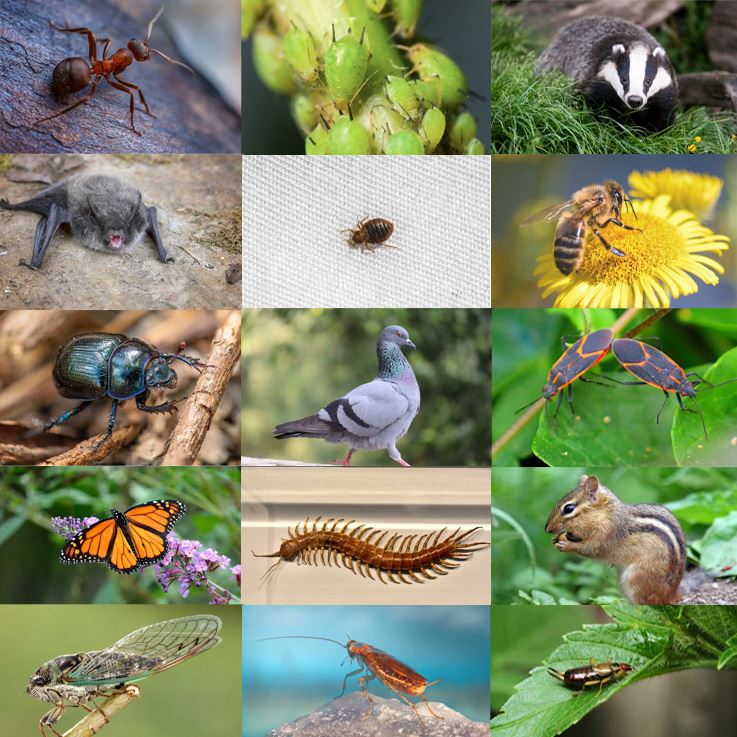
Chigger Life Cycle
The life cycle of chiggers (Trombiculidae) consists of four stages: egg, larva, nymph, and adult. The most relevant and often problematic stage for humans is the larval stage when chiggers can bite and cause skin irritation. Here is their life cycle:
- Egg: The life cycle begins with adult female chiggers laying eggs in the soil, usually in protected, damp areas like leaf litter or grass. The eggs are small and oval, and they hatch into larvae after a few days to several weeks, depending on environmental conditions.
- Larva: This is the stage of chiggers that commonly interacts with humans. Larval chiggers are tiny, typically red or orange, six-legged arachnids. They are parasitic during this stage. After hatching, they are non-feeding for the first few days but eventually become active and seek out a host. When they find a suitable host, they attach to the host's skin, inject digestive enzymes, and feed on skin cells, causing the characteristic itching and irritation. Larval chiggers can stay attached to a host for several days before dropping off to develop into nymphs.
- Nymph: After feeding as larvae, chiggers drop off their host and transform into nymphs. Nymphs have eight legs, distinguishing them from the larval stage. They do not feed on humans but instead feed on small insects and arthropods. The nymphal stage is primarily focused on growth and development.
- Adult: Once the nymphal stage is complete, chiggers undergo a final molt to become adults. Adult chiggers are typically free-living and do not feed on animals. They often feed on plant material or other small organisms in the environment. They reproduce to lay eggs, completing the life cycle.
The larval stage is the one that causes itching and discomfort to humans. Preventative measures like wearing protective clothing, using insect repellent, and taking a shower after outdoor activities can help reduce the risk of chigger bites during this stage of their life cycle.

Hear From Our Happy Customers
-
"Great Communication"
Tech was on time, communication was great, and he accommodated my needs.
- Alonzo W. -
"Exceeds Expectations"
I can’t say enough positive things about this company... The tech that came out, Jarvis went above and beyond my expectations. Thank you guys, I will continue using your services.
- Jake M. -
"Wonderful Service"
Wonderful service. Jarvis is great. Took care of everything I needed. Thank you!
- Henry P. -
"Fantastic & Patient"
Jarvis was fantastic and patient. He answered my questions with an in-depth explanation and addressed all of my areas of concern. Would love for him to be my assigned tech going forward. Well done!
- Yonnette M. -
"Professional & Considerate"
I’m pleased with Miche services. Jarvis came today. Professional and considerate. Thank you!
- Judy B. -
"Very Knowledgeable"
The tech that arrived was courteous, professional, and very knowledgeable. He was Great.
- Uerial I.

